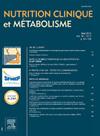Evaluation of parenteral nutrition practices in pediatric intensive care units
IF 0.4
4区 医学
Q4 ENDOCRINOLOGY & METABOLISM
引用次数: 0
Abstract
Purpose
This study aimed to assess parenteral nutrition (PN) practices in pediatric intensive care units (PICUs) in Turkey and compare them with existing literature.
Material and methods
A prospective survey was conducted among physicians from 37 PICUs. The survey, based on literature and guidelines, collected data that were statistically analyzed.
Results
Malnutrition was a significant factor in initiating PN in 91.9% of units, with the weight-for-height scale being the most common method (59.5%) for assessing malnutrition. PN was started within the first week in 73.9% of non-malnourished children who could not be fed enterally, while for chronically malnourished children, 27% initiated PN within 48 hours of admission. The most frequently used methods for determining PN amounts were the Holiday-Segar formula and body surface area calculations (56.8% and 45.9%, respectively). Energy requirements were mainly calculated based on weight (59.5%) or the Schofield formula (40.5%). Within the first week, 54.1% of units reached 2/3 of target calories in 75% of their patients. Ready-to-use solutions were preferred by 81.1% of units. The most common PN-related complications were electrolyte imbalances (31.3%) and infections (22.8%).
Conclusions
The study highlights the need for applicable guidelines and standardized nutrition education, emphasizing that factors like malnutrition frequency, methods for determining caloric needs, the availability of PN products, and unit capabilities are crucial considerations for developing country-specific guidelines.
儿科重症监护病房的肠外营养实践评价
目的本研究旨在评估土耳其儿科重症监护病房(picu)的肠外营养(PN)做法,并将其与现有文献进行比较。材料与方法对37个picu的内科医生进行前瞻性调查。该调查以文献和指南为基础,收集数据并进行统计分析。结果91.9%的单位营养不良是引起营养不良的重要因素,其中身高体重比量表是评估营养不良最常用的方法(59.5%)。73.9%不能肠内喂养的非营养不良儿童在第一周内开始了PN,而对于慢性营养不良儿童,27%在入院后48小时内开始了PN。确定PN量最常用的方法是Holiday-Segar公式和体表面积计算(分别为56.8%和45.9%)。能量需要量的计算主要基于体重(59.5%)或Schofield公式(40.5%)。在第一周内,54.1%的单位在75%的病人中达到了目标卡路里的2/3。81.1%的单位选择即用型溶液。最常见的pn相关并发症是电解质失衡(31.3%)和感染(22.8%)。该研究强调了制定适用指南和标准化营养教育的必要性,强调营养不良发生率、确定热量需求的方法、PN产品的可获得性和单位能力等因素是制定发展中国家特定指南的关键考虑因素。
本文章由计算机程序翻译,如有差异,请以英文原文为准。
求助全文
约1分钟内获得全文
求助全文
来源期刊

Nutrition Clinique et Metabolisme
医学-内分泌学与代谢
CiteScore
0.80
自引率
16.70%
发文量
216
审稿时长
78 days
期刊介绍:
Nutrition Clinique et Métabolisme is the journal of the French-speaking Society of Enteral and Parenteral Nutrition. Associating clinicians, biologists, pharmacists, and fundamentalists, the articles presented in the journal concern man and animals, and deal with organs and cells. The goal is a better understanding of the effects of artificial nutrition and human metabolism. Original articles, general reviews, update articles, technical notes and communications are published, as well as editorials and case reports.
 求助内容:
求助内容: 应助结果提醒方式:
应助结果提醒方式:


